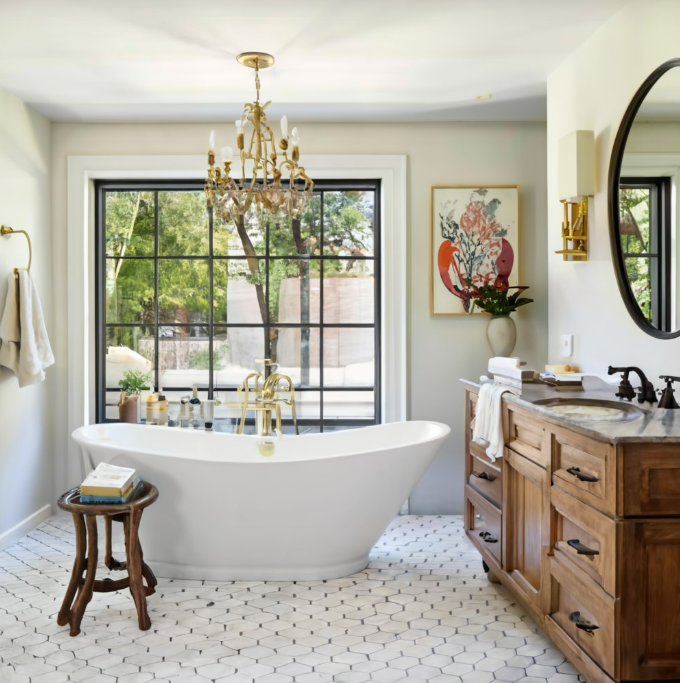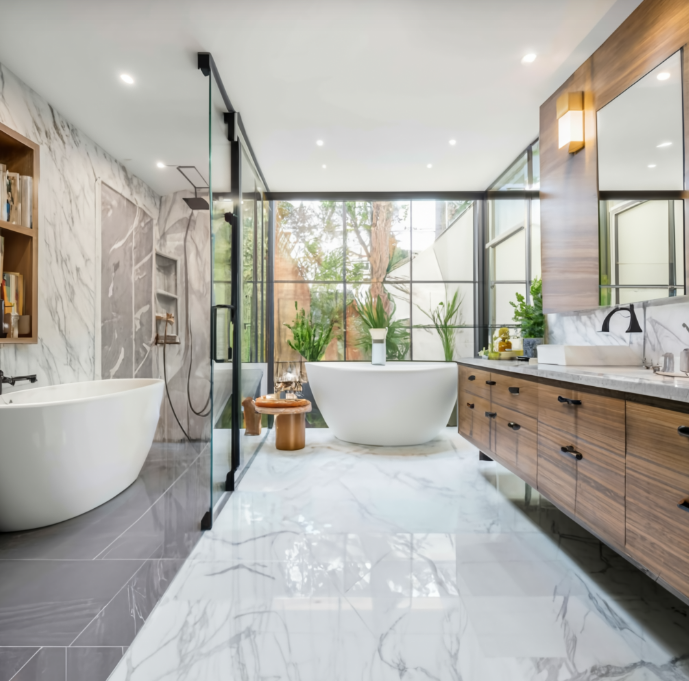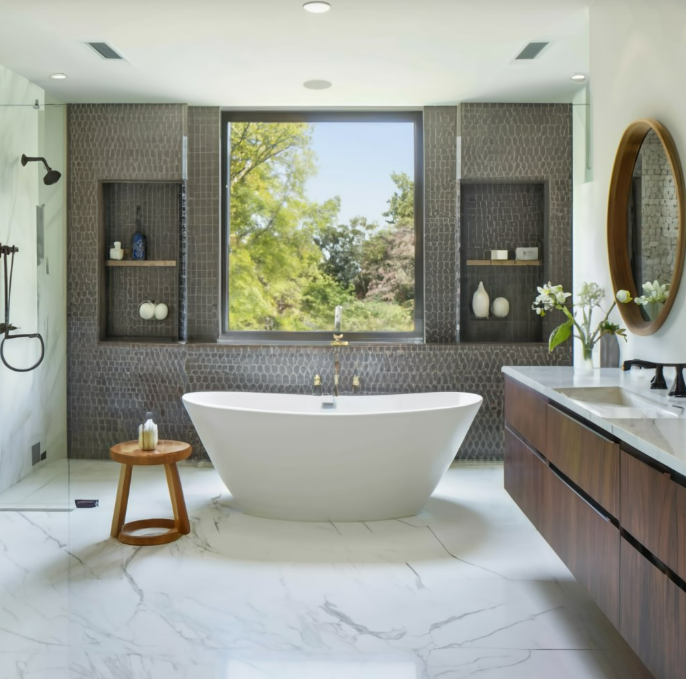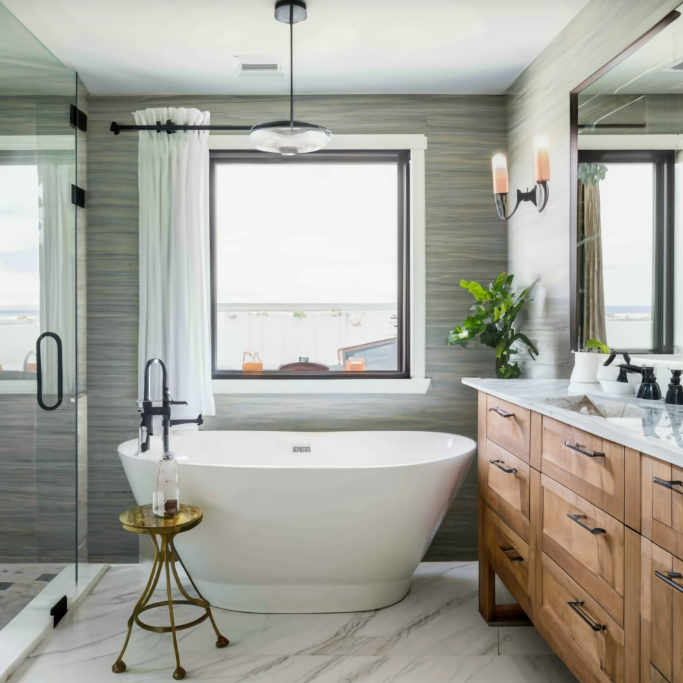Explore different types of bathroom renovation projects to find the perfect fit for your needs and preferences, whether it’s a simple refresh or a complete overhaul of your space.
Are you dreaming of a bathroom that’s not just functional, but truly reflects your personal style? The good news is that bathroom renovation projects come in all shapes and sizes, from simple cosmetic updates to complete overhauls of the entire space. But which type of renovation is right for you? In this article, we’ll explore the different types of bathroom renovation projects to help you plan your perfect bathroom transformation.
Bathroom renovation projects can range from simple cosmetic updates to complete overhauls of the entire space. The type of renovation you choose will depend on your budget, the condition of your existing bathroom, and your desired goals for the space. Whether you’re looking for a budget-friendly refresh or a high-end remodel, there’s a bathroom renovation solution that can turn your dream bathroom into a reality.
Key Takeaways
- Bathroom renovation projects can range from simple cosmetic updates to complete overhauls of the entire space.
- The type of renovation you choose will depend on your budget, the condition of your existing bathroom, and your desired goals for the space.
- Partial renovations and cosmetic updates can be more budget-friendly options, while complete overhauls offer the opportunity to design your dream bathroom from scratch.
- Accessibility-focused renovations can make a significant difference for homeowners with special needs or mobility challenges.
- Careful planning and consideration of your specific needs and goals are key to a successful bathroom renovation project.
Complete Overhaul
When it comes to bathroom renovation, a complete overhaul is often the most comprehensive and transformative approach. This type of bathroom remodeling involves gutting the entire space and rebuilding it from the ground up, replacing all the major components, including the flooring, walls, fixtures, and plumbing. A complete overhaul presents homeowners with the opportunity to design their dream bathroom layout and incorporate the latest features and functionalities to suit their specific needs and preferences.

However, this level of bathroom renovation also requires a significant investment of time and resources. Homeowners must carefully plan the scope of the project and consider a variety of considerations for bathroom renovation, such as the condition of the existing bathroom, the desired layout and features, and any necessary structural changes. Failing to properly assess these bathroom renovation common mistakes can lead to unexpected challenges and cost overruns, making it crucial for homeowners to work closely with experienced contractors and designers to ensure a successful outcome.
| Key Considerations for a Complete Bathroom Overhaul | Description |
|---|---|
| Existing Bathroom Condition | Evaluate the current state of the bathroom, including the condition of the flooring, walls, plumbing, and electrical systems. This information will help determine the extent of the necessary renovations. |
| Desired Layout and Features | Develop a clear vision for the new bathroom design, considering factors like the placement of fixtures, the size and shape of the room, and the incorporation of desired features such as a larger shower, a freestanding tub, or enhanced storage solutions. |
| Structural Changes | Identify any necessary structural modifications, such as moving walls, expanding the bathroom footprint, or addressing plumbing or electrical issues. These changes can significantly impact the scope and budget of the renovation project. |
| Budgeting and Timeline | Carefully plan the project’s budget, accounting for the costs of materials, labor, and any unexpected expenses that may arise. Additionally, consider the timeline for the renovation, as a complete overhaul can be a lengthy process that may require temporarily relocating or accommodating household members during the construction phase. |
Partial Renovation
For homeowners looking to improve the functionality or aesthetics of their bathroom without a full-scale remodel, a partial bathroom renovation can be a more budget-friendly option. This type of renovation involves upgrading specific features or areas within the existing space, rather than gutting the entire room.
Partial renovations may include updating the bathroom vanity, replacing the shower or tub, installing new tiles, or upgrading the lighting and fixtures. This approach allows homeowners to tackle specific pain points or outdated elements in their bathroom without the time and expense of a complete rebuild.
When planning a partial bathroom renovation, it’s important to carefully assess the condition of the existing space and identify the areas that need the most improvement. By focusing on key upgrades, homeowners can enhance the functionality and aesthetics of their bathroom without the commitment of a full-scale remodel.

The materials and techniques used in a partial renovation can vary depending on the scope of the project. For example, updating the vanity may involve replacing the countertop and plumbing fixtures, while a tile upgrade may require more extensive work to the walls and floor. By working with experienced contractors and designers, homeowners can ensure that their partial renovation seamlessly integrates with the existing bathroom space and meets their goals for the project.
Cosmetic Update
For homeowners seeking a budget-friendly way to refresh the look of their bathroom, a cosmetic update can be a game-changer. This type of renovation involves making surface-level changes to enhance the visual appeal of the space without the need for major structural work or plumbing overhauls. From updating the bathroom vanities and fixtures to replacing the bathroom tiles, a cosmetic update can breathe new life into your bathroom without breaking the bank.
One of the most popular and accessible cosmetic updates is a fresh coat of paint. Experimenting with different color palettes can dramatically alter the mood and ambiance of the space, transforming a dull or outdated bathroom into a modern, stylish oasis. Additionally, swapping out old bathroom fixtures like faucets, showerheads, and lighting can instantly elevate the overall aesthetic without the need for extensive renovations.
For homeowners looking to make a more substantial visual impact, replacing the bathroom tiles can be a game-changer. Whether you opt for a complete tile overhaul or a targeted refresh in specific areas, new tiles can instantly update the look and feel of the space. From sleek, minimalist subway tiles to bold, patterned options, the possibilities are endless when it comes to achieving your desired bathroom design.

Ultimately, a cosmetic bathroom update allows you to breathe new life into your space without the time, expense, and disruption of a full-scale bathroom renovation. By focusing on the visual elements and making strategic upgrades, you can create a stunning, successful bathroom renovation that reflects your personal style and enhances the overall functionality of the room.
Accessibility Improvement
For homeowners with special needs or mobility challenges, a bathroom renovation focused on accessibility can make a significant difference in the functionality and usability of the space.
Accessibility improvements may include widening doorways, installing grab bars, lowering vanities or sinks, and adding features like curbless showers or walk-in tubs. These types of modifications are designed to make the bathroom safer, more comfortable, and easier to use for individuals with physical limitations or disabilities.
Modifications to Accommodate Users with Special Needs or Mobility Challenges
When planning an accessibility-focused bathroom renovation, it’s important to consult with occupational therapists or accessibility experts to ensure the new design meets the specific needs of the users. This may involve evaluating factors like the user’s mobility, dexterity, and overall physical capabilities to determine the most appropriate modifications. By incorporating these accessibility features, homeowners can create a bathroom that is not only visually appealing but also highly functional and tailored to their individual needs.
Ultimately, an accessibility-focused bathroom renovation can have a profound impact on the quality of life for individuals with special needs or mobility challenges. By prioritizing functionality and usability, these renovations can improve safety, independence, and overall comfort in the bathroom, allowing users to maintain their dignity and live more comfortably in their own homes.

